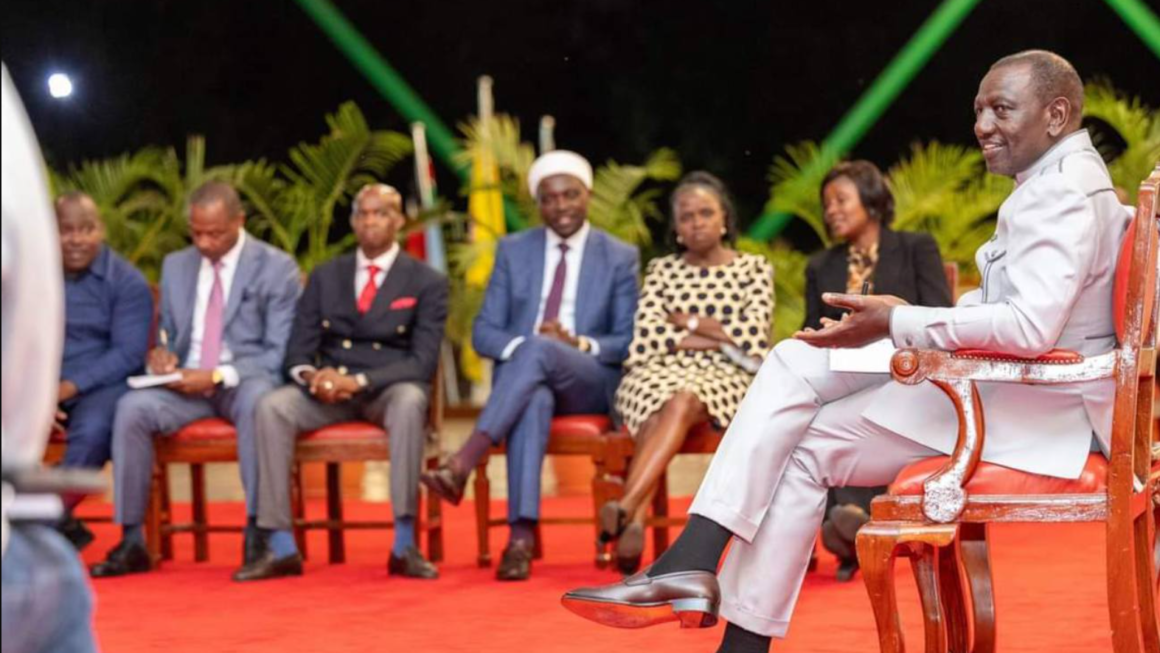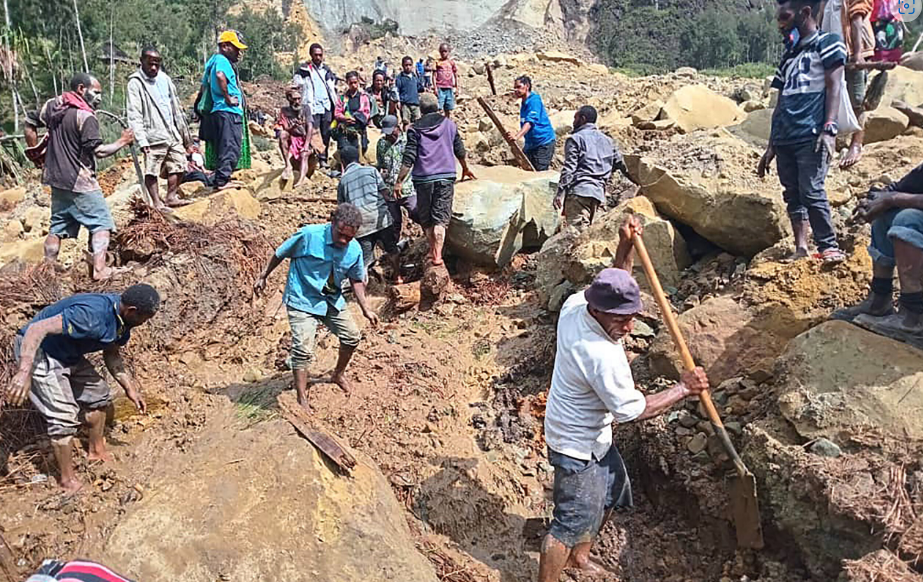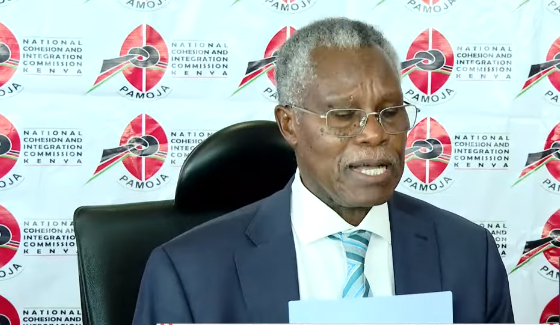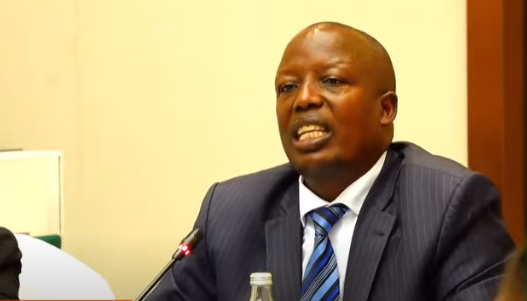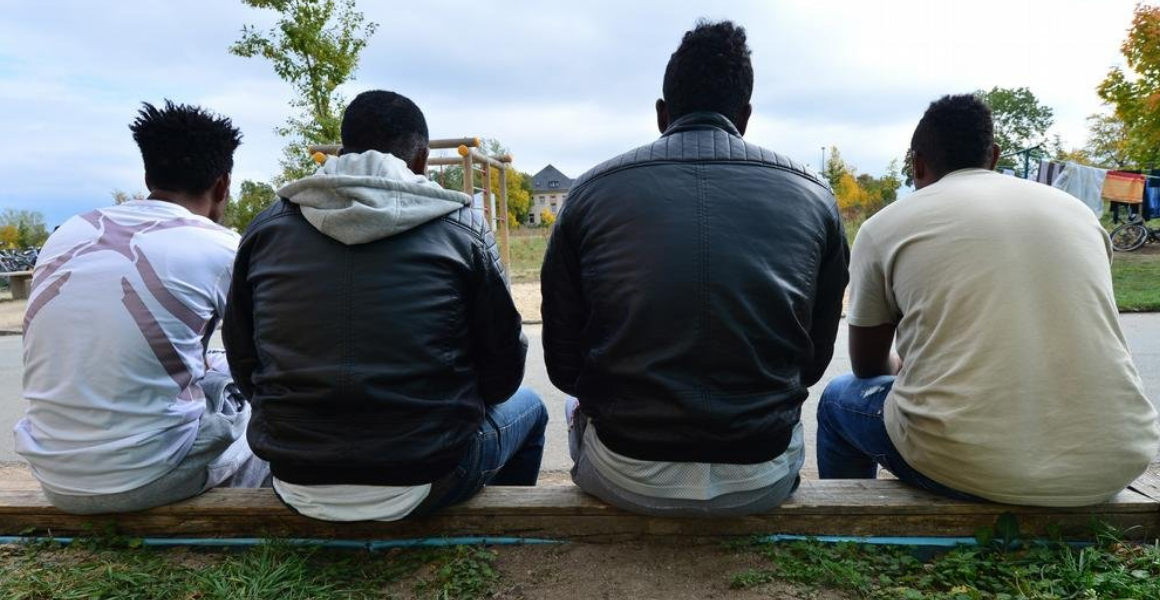Smartphone use in the bedroom has become common among many Kenyans lately. Frequent technological advancement is a significant attribute of this trend. When you jump into a social media app like TikTok in the middle of the night, Kenyans flock to it for entertainment and video sharing. Have you ever asked yourself why? Affordable internet is a factor leading to increased smartphone use in the bedroom. Most users can easily surf the internet cheaply without breaking their wallets. While it might seem like a great time to be alive, the downside is that it breeds addiction. Most people spend most of their time switching from one app to another, whether for entertainment, education, or communication. Read this article to find out why you should stop carrying your smartphone to the bedroom. Why Carrying Your Smartphone to The Bedroom Is Not An Option 1. Interrupted Sleep Patterns Imagine switching between apps for long hours while in the bedroom. Chances are you will not even think of sleeping; if you do, you’ll find it challenging to start sleeping smoothly. That will ultimately have an impact on your regular sleeping pattern. A solid sleep pattern is admirable in a culture that values sleep and rejuvenation. However, to avoid struggling and adopting a weird sleeping habit, keeping the smartphone away from the bedroom is advisable. 2. It Could Make You Feel Depressed A lady looking depressed and in deep thoughts Have you noted that sometimes you wake up depressed, yet you go to bed stress-free? The answer could probably be in your smartphone. When going through social media, you might notice that some people are doing better than you. You may also encounter celebrities flaunting their affluent lifestyles. That may make you start stressing about how to be like them. Therefore, it’s ideal to avoid carrying your smartphone to the bedroom to stay healthy. Additionally, research from Baylor University indicates that people who use their smartphones frequently are vulnerable to moodiness and temperamental behavior. So, you might not be an exception. What Should You Do Instead? To have quality sleep, you should stick to particular hours of using your phone to minimize overexposure to blue lights. Additionally, start reading a physical book instead of carrying your phone just before sleep. You can also set reminders on your phone to alert you that you need to sleep. This way, you will have a healthy and uninterrupted sleep pattern.
The Recent Muguka Ban is Null and Void: President Ruto Speaks
Following a ban on the trade of muguka in Mombasa and Kilifi, President Ruto called a meeting in Embu County to discuss the matter. In the meeting, the president faulted a ban on muguka and miraa, citing that the crops are legal in Kenya. Embu Governor Cecily Mbarire led the meeting in Embu, which several leaders, including the Cabinet Minister for Agriculture Mithika Linturi, attended. The leaders agreed that farming miraa and muguka is recognized as legal in the national legislation. Therefore, the ban on muguka is null and void as it contradicts this legislation. According to a statement from the state house, the Crops Act 2013 and the Miraa Regulations 2023 recognize Miraa as a scheduled crop. The statement confirms that the National Assembly passed the Crops Act 2013 and the Miraa Regulations 2023. Fresh muguka ready for the market Part of the statement reads; Having been passed by Parliament, the regulations obligate the Government to allocate funds for the farming, licencing, promotion, regulation, transportation, aggregation, selling, marketing and export of the crop, The leaders resolved that the future of muguka and Miraa should be focused on scaling up the crop’s farming, pricing, grading, packaging, and value addition. The government is committed to ensuring value addition to the crop and has already allocated Ksh500 million for the 2024/25 Financial Year. After the meeting with Embu county leaders, the president proceeded to hold a phone conversation with the governors who imposed a ban on muguka. The president talked with the governors from Mombasa, Kilifi, and Taita-Taveta, and they agreed to attend a stakeholder meeting to discuss the issue. Governors Nassir (Mombasa), Mungaro (Kilifi) and Mwadime (Taita-Taveta) have agreed to participate in a meeting of all stakeholders to be convened by the Ministry of Agriculture and Livestock this week as was agreed with the leadership of Embu County on Monday. President Ruto said. A man eating muguka Earlier, the Mombasa governor banned muguka sale, distribution, and consumption in the county. According to the governor, the traders had failed to adhere to the regulations safeguarding the sale and distribution of the product for the good of the community. The governor of Kilifi, Mungaro, and his counterpart, the governor of Taita-Taveta, Mwadime, followed suit in banning Muguka in their counties. The governors based their decision to ban the sale and use of muguka on the harmful effects the stimulant plant has on the community. They termed the consumption of muguka as a threat to the young generation confirming that children as young as 10 years are witnessed chewing the drug. The ban on muguka by the coast county governors has since got netizens talking and taking different sides. While some are happy with the actions, others, including farmers and traders, have strongly opposed it, terming the ban a threat to their livelihood. At this moment, everyone hopes that the president’s intervention will help resolve the matter amicably.
2000 Feared Dead in Papua New Guinea Landslide
A landslide in Papua New Guinea has buried more than 2000 people. This tragedy occurred in a remote village in the country’s mountain area. The residents are using their hands and sticks to remove the bodies from the mud. According to the residents, heavy machines cannot access the area to help in recovery. Furthermore, the damaged roads and the likelihood of more landslides are intricating recovery efforts. The tragedy happened at 3 a.m. in the Northwest of Port Mosby, Enga Province. Simple wood structures, homes, and other buildings were not spared. “It’s really heartbreaking to describe what happened. People are still crying for help; the survivors are still crying for help. It’s almost four days, and the bodies are still buried. It has never happened in the history of the Province.” One of the survivors, Miok Michael, lamented. Residents digging debris Four days after the accident, very few bodies have been retrieved. Different aid agencies are struggling to access the area. Initial UN estimates reported 671 deaths, but the PNG’s disaster agency believes more than 2,000 people are being buried. The ground is still moving, a highway bridge just collapsed, and all these are complicating rescue missions. Justine McMahon, CARE International in PNG. Justine reported that houses were buried up to 26 feet (8 meters), and it would be difficult to reach some of the victims. One hundred fifty houses in the Yambali village are buried, and since the ground is under increased pressure, the rocks are still falling. Of the total affected group, 40% are children who have been deeply traumatized. The exact cause of the landslide is not yet clear, as the area is considered to be receiving considerable rainfall. Papua, New Guinea, has a population of close to 10 million people. Most of the residents of the ill-fated village moved to the area to mine gold in the waste dumps and open pits of the adjacent Porgera gold mine. The nearby villages are wondering what will happen to them as the ground continuously shifts. A provincial administrator in Enga Sandis Tsaka narrated, Every hour you hear rock breaking. It’s like a bomb or gunshot, and the rocks keep falling down. To avoid further loss, the government plans to evacuate close to 8,000 people to prevent another tragedy. Australia’s government has promised to assist. They will provide a package of 2.5 million alongside a specialized team in disaster response. It’s not a rescue mission; it’s a recovery mission. It’s doubtful they will have survived. UNICEF Papua New Guinea’s Niels Kraaier.
Change County Names Based on Ethnic Groups, NCIC Says
What is in a name? The National Cohesion and Integration Commission Kenya, NCIC, seeks to rename ten counties named after ethnic groups. The counties are Nandi, Meru, Kisii, Tharaka-Nithi, Taita-Taveta, Embu, West-Pokot, Samburu, Elgeyo-Marakwet, and Turkana. The NCIC is committed to understanding the root causes of tribal conflicts in Kenya. One of the challenges it has identified is the naming of our counties. We recognize that there is a problem when it comes to people living in counties that have ethnic names, says Rev. Samuel Kobia, Chairman of the NCIC. The NCIC believes that renaming these counties will have a positive impact. It will help minority groups residing in these areas feel less discriminated against by the larger group. Additionally, it will enhance the sense of security for all Kenyans, regardless of where they live or work. This proposal is part of the NCIC’s comprehensive strategy to address boundary disputes, which have been a significant cause of ethnic clashes. To achieve this, NCIC is preparing to table a motion in parliament to reduce discrimination against citizens of any ethnic origin. Out of the 47 counties, 33 have experienced boundary disputes, making it a leading threat to peace and cohesion. Although devolution was established as a solution to the unequal distribution of resources and growth, it has been a cause of conflicts, especially in areas demarcated along ethnic dwellings. Major Conflicted Boundaries According to the commission, the significant disputes have been between Narok- Migori, Kitui- Tana River, Kisumu- Kericho, Taita- Taveta – Makueni, Meru-Isiolo, Nandi- Kisumu, West- Pokot- Baringo- Turkana, Kisumu- Vihiga, Nyamira- Kisii and Kwale- Kilifi. A person holding an arrow The NCIC boss also cautioned Kenyans on how they share and consume social media content, adding that it has been fueling some ethnic contempt. Politicians were also warned against misinforming the public with their utterances. We have taken what was said in Limuru three very seriously. We are investigating and have instructed our investigating team to now look at what was said by who so that we can take it up… Rev Kobia added. To emphasize the work the commission does, it reported that it had taken up the following cases from different social media platforms: 44 discrimination cases, 93 misinformation cases, 24 incitement cases, 68 disinformation cases, and six hate speech cases. In addition, out of the 67 hate speech cases they have handled, 43 are currently being investigated, two are already in court, and 13 have been concluded.
It’s a Win for JSS Teachers as Interns are Offered Permanent Jobs
From July 1, 26,000 JSS teachers will receive new, higher salaries. The positive changes will not have to wait until January 2025, as TSC had proposed; this followed intervention by the National Assembly’s House Committee on Education and Research team. In their presentation, the Teachers Service Commission had indicated to us that the interns will be converted to permanent and pensionable in January 2025 next year. Which we actually felt as a committee the financial year begins in July… Hon Julius Melly, Chairman Education and Research Committee. The JSS tutors have been on strike since the schools opened for the second term. They have been pleading to the TSC to employ them on a permanent and pensionable basis and to review their salaries upwards. The employing body, TSC, had started threatening the striking teachers by asking them to write a letter to ‘show cause’ and explain why their engagement should not be terminated. The 38,600 intern teachers were offered the opportunity to work as JSS tutors, hoping they would be employed permanently. The employer has also required them to teach subjects that are not their specialty. Since 2019, TSC has been employing interns through a controversial internship program. Those engaged in primary schools earn a stipend of Ksh 15,000, and interns in Secondary schools take home Ksh 20,000. However, the JSS intern teachers will now enjoy a robust health care scheme, receive a basic pay of Ksh 36,621, and receive a house allowance of between 9,600 and 16,500, varying depending on their work locations. They will also be given commuter and leave allowances. Narok JSS teachers protesting The education and research committee were tabling their recommendations before the Budget and Appropriations Committee that Hon Ndindi Nyoro leads. The Budget committee sought to know the expected total cost of the move. What is the cost for hiring on a permanent and pensionable basis all the 46,000 JSS and other interns and bringing back time from January 2025 to July 2024? We would want you to give us the cost… Hon. Ndindi Nyoro Chairman, Budget and Appropriations Committee. The TSC added nearly 20,000 interns to teach at the JSS facilities in September last year. Although the two House Committees seek to have all the interns employed as permanent and pensionable, the fate of this last group hangs in the balance. Since the schools reopened for the second term, the Junior Secondary School Teachers have been on strike, paralyzing learning for JSS students in public schools.
Mental Health Issues While in the Diaspora
When you move to a new country where you know no one and your resources are limited there is a high chance that you will suffer from mental health issues. Diaspora depression is a complex condition that affects most people who move from their homeland. The move from people who provide emotional support can intensify emotional distress. The complications include discrimination language barrier and social difficulties. What are the effects of perceived discrimination on mental health? When moving to a new environment at some point you think to yourself about how to deal with discrimination, what an individual mostly doesn’t think about is the extent of the discrimination and racism one might face in the diaspora. A woman with mental health issues The impact of perceived discrimination in the diaspora may be even more catastrophic than in the homeland. Due to the perception of being discriminated and marginalized against an individual may experience more stress, anxiety, and depression. This may rock an individual’s confidence and destroy their self-esteem which in turn may inhibit their ability to assimilate and succeed in the diaspora. However, discrimination and racism may affect not only someone’s mental health but also their perspective of themselves which affects their well-being. How does cultural background affect mental health? Cultural norms, beliefs values, and attitudes towards mental health influence how an individual interprets and reacts towards mental health. In most cases, an individual from Kenya is very reserved toward therapy and mental institutions, thus making it hard for them to deal with their mental health. Acculturation-the process of adjusting to a new culture – may introduce more stress and dilemmas which only complicates mental health more. Cultural influence touches on the help-seeking behavior the coping mechanism availability and mental health services from an individual culture. Cultural conditions like spirituality and family background may either provide protection or aggravate mental health problems. A man struggling with mental health An individual who believes that he is not prone to any mental health issues or mental may be seen as a form of weakness thus making it hard for an individual to seek help considering his support system is not in the same state as his. The cultural factor plays a great part in forming a person’s understanding and consciousness of mental health. In conclusion depression and mental health issues is a broad topic that needs the community to come together to assist the affected. The process aimed at reaching a mutual understanding, respecting, and working towards promoting inclusiveness in the diaspora community to ensure mental stability and well.
Yes, That Single Mom May Be Too Much For You
The internet streets were, at one point, awash with stories about one especially vocal blogger. He seemed to have a particular disdain for single moms, whom he categorically tended to blame for their parenting status. Fast forward, and the gossip mills came alive. The gentleman, it was purported, was actually the product of a single mom. It seems she did not reveal this pertinent information to him, and the man he called father did not share any genetics with him. Whether this story is true or not, is open for discussion. One thing that stands out, though, is the disdain the fellow had for single moms. Now, here is where it gets interesting, he is not an isolated case. A simple stroll down the internet streets will expose you to a barrage of ‘less than nice’ things aimed at these ladies. Many men get unsolicited advice to keep away from pursuing or marrying single moms . Well, this may seem controversial, but that may not be the worst bit of advice. Do you want to know why? Simple response really, she may simply be too much for you. Yes, take a second to read that again. Single Mom Statistics Let’s just throw in some crucial statistics before we go into why she may be too much for you. A Gallup report shows that Sub-Saharan Africa is leading at 32% when it comes to single moms globally. Next on the list is Latin America at 30% and U.S./Canada at 19%. Closer to home, there has been a significant increase in the number of single mothers registering births. In 2021 the figure stood at 13.5%, and within a year reached 13.9%. As you can see, single mom homes are on the rise, and if the trends are anything to go by, will not end any time soon. So what does it mean for the men who may want to pursue them? Woman hugging her son You Will Never Be Number One in Her Life My kids will always come first, says Grace, a single mother of two. That is the first thing I tell any man who shows an interest in me. Unless in very rare cases, the single, committed mom will always place her child/children before anyone else. If you can’t get comfortable with that simple fact, keep it moving. If you want to do anything with her, factor in the kids as well. Expect plenty of cancelled dates, last-minute plan changes, and plenty of compromising, because of those little people. If You Have a Weak Character, She May Emasculate You I dated a single mom and quickly came to the realization that she did not need me. Indeed I felt like that spare tire that is only occasionally used, says George. Men take pride in being protectors and providers. There’s joy in knowing that your family is thriving because of your efforts right? Well, in the case of the single mom, she has been the protector and provider all along. The truth is, she may really not need you at all. If you are not a secure man who sees her strength, she could emasculate you. You could lose friends When I told my family I was dating a single mom, I got instant backlash. What was wrong with me, couldn’t I find some nice young girl to marry? Before long my relationship with them became so strained I started staying away, says John on his experience. Family and friends may subscribe to the prevailing stereotypes around single moms. If you really like her, you may have to cut ties with some of them. Are you ready for that? It would be interesting to know your thoughts on this. Have you dated or are in a relationship with a single mom? What would you tell fellow men out there?
Top 5 Scholarships for International Students in the U.S. in 2024
Many international students aspire to relocate to the United States for further studies. Reports state that more than 1.7 million foreign scholars enlisted for a masters in a U.S. university. This is a huge improvement compared to the 35,000 international students who enrolled to the country’s universities in the 20th century. Here are five great scholarships for all international students this year. Fulbright Foreign Students Scholarship All American universities offer this scholarship to Masters and Ph. D. students. It has a variable amount and last for at least a year. This program allows artists and budding professionals to conduct in-depth research in the U.S. It is available to students in over 160 countries. The scholarship benefits more than 4,000 international scholars annually. Clark Global Scholarship Program You can apply for this scholarship in at any U.S. university. It is ideal for undergraduate studies and successful applicants get a partial payment of $15,000 to $25,000. The Clark Global Program lasts for four years. However, you cannot get it if you are a transfer student. AU Emerging Global Leader Scholarship The scholarship enhances education’s accessibility for international scholars and diversity among them. It attracts people seeking academic success, global engagement and leadership development. AU Emerging Scholarship’s beneficiaries often address social and civic challenges in their home countries once it ends. It is available in any American university, full-funded and applicable to Bachelor and Masters students. Simmons University Kotzen Scholarships Simmons University runs the Gilbert and Marcia Kotzen Scholars Program. It targets international scholars who seek transformative education in the U.S. The university offers the Simmons Study Abroad Award each year. It recognizes students who prosper studying abroad and in research. This fully funded scholarship is for undergraduate degrees. Boston University Trustee Scholarship This is one of the United States’ most prestigious scholarships. Boston University awards it to undergraduate students and it pays their full tuition fee. International and domestic students can apply for it. However, the award is only eligible to individuals who are committed to lead and develop the world. Still, it comprises board and room allowance for four years. The U.S. has expanded its education sector to accommodate millions of international students. Its best scholarships include Fulbright Foreign Students Scholarship, Clark Global Scholarship Program, AU Emerging Global Leader Scholarship, Simmons University Kotzen Scholarships and Boston University Trustee Scholarship. They last for one to four years and are appropriate for Bachelors, Masters and Ph. D. studies.
Labor Agreements Create New Opportunities for Kenyans in the Gulf
A recent report by the International Organization for Travel (IOM) reveals a major shift in travel trends for Kenyans and other Africans. Traditionally, the West, particularly the United Kingdom and the United States, drew a continual stream of migrants seeking better possibilities. However, the tide is turning, and the Gulf region has emerged as a popular destination in recent years. This shift is due to a variety of variables. The Gulf countries provide a plethora of economic opportunities in industries such as hospitality, security, and construction, making them particularly appealing to job seekers from East Africa. The Gulf region’s geographical proximity to Africa also plays an important impact. In comparison to Western nations, lesser distances translate into reduced travel expenses, making these countries more accessible. Bilateral labor agreements between Kenya and many Gulf nations have further facilitated this migrant wave. These agreements serve as a framework for regulating Kenyan workers’ employment and facilitating their integration into the Gulf workforce. The increase in remittances sent back by Kenyan workers in the Gulf demonstrates the favorable impact. Notably, Saudi Arabia has become a major source of remittances to Kenya, surpassing even previously dominating countries such as the United States and Britain. From January to August 2023, Kenyans transferred back an astounding Sh32.3 billion (USD 246 million) to Saudi Arabia alone. A person sighning a contract Another aspect driving this trend is the relative ease of admission into Gulf countries. Western nations’ often tighter admission criteria provide a challenge when compared to the Gulf’s simpler processes. Recruitment firms created in Kenya and other East African countries serve as catalysts, making the relocation process easier for job seekers. However, African migrants in the Gulf region encounter significant hurdles. There have been reports of abuse, including physical and sexual violence, restrictions on movement, and unfair labor conditions. These studies raise severe concerns about the safety of these workers. Recognizing this, the Kenyan government has taken steps to strengthen safety for its nationals working overseas, particularly in Saudi Arabia. Finally, the Kenyan and African migration envision is changing. The economic prospects and accessibility provided by the Gulf region, together with supportive bilateral agreements and expedited processes, are attracting an increasing number of migrants. While issues remain in worker welfare, the Kenyan government’s proactive approach offers some promise for better working circumstances for its residents in the Gulf region.
Over 200 Unretrieved Bodies Still Lie in Mt. Everest: Will Cheruiyot’s Body Be Retrieved?
The death of Cheruiyot Kirui, a mountaineer who took the challenge of climbing Mount Everest without supplementary oxygen has got Kenyans talking for days. There was even a video shared on social media alleging that Cheruiyot’s body was being retrieved from the mountain. The video, however, turned out to be fake as the body did not belong to Cheruiyot and it was shared Mountain.trekking Instagram page weeks before his death. According to a post on X by Goddie, it’s extremely dangerous, torturous, and expensive to retrieve a dead body from Mount Everest. The cost of retrieving a body in Mount Everest can go up to Ksh.9 million, together with a fatal price. Since many families who lost their loved ones in such a thrilling adventure don’t dare to spend so much, over 200 bodies lie unretrieved on Mt. Everest. Due to the extreme temperatures, the bodies remain intact for several years without decomposing. According to Ultimate Kilimanjaro, the high altitude and extreme weather conditions have made it hard to retrieve dead, frozen bodies from the mountain. They add that frozen bodies can be quite heavy weighing over 136 kg. While Helicopters can come in handy for the retrieval of bodies, they can only land at Camp 2, 6,400 meters. The air density on the upper slopes cannot allow helicopters to go past Camp 2. Cheruiyot’s selfie on Mt. Everest While this is a tragedy that remains printed in the minds of the affected families, all they can do is hold memorial services at home leaving their loved ones to rest on the mountain. The highest rescue done on Mt. Everest using a helicopter was up to 7,800 meters and that was only possible because the weather was calm. Given these obstacles, is it still possible to bring back the body of the Kenyan Mountaineer, Cheruiyot who died at the summit of the mountain 8,000 meters away? Will Cheruiyot’s Body Be Retrieved? Out of 300 deaths that occur on Everest, 200 of them were irretrievable due to the high costs and unfavorable conditions. With this in mind, there’s little hope of Cheruiyot’s body being retrieved from the mountain. However, the family and friends of the dedicated mountaineer are not losing hope in bringing their kin home. While they agree that they don’t have enough information yet, one of Cheruiyot’s friends says there’s a plan in place to figure out how to bring their kin back home. According to the family, they’re figuring out two factors that will make them decide whether to bring the body home or not. One of the factors is cost since they understand how expensive it can be to retrieve a dead body from the mountain. Another factor they have to consider is the weather which has to be conducive for the retrieval of the body. With this information, there’s still hope that Cheruiyot will be one of the few heroes whose bodies make it home to burial. As of now, all we can do is wait for the family to speak about their final decision.



